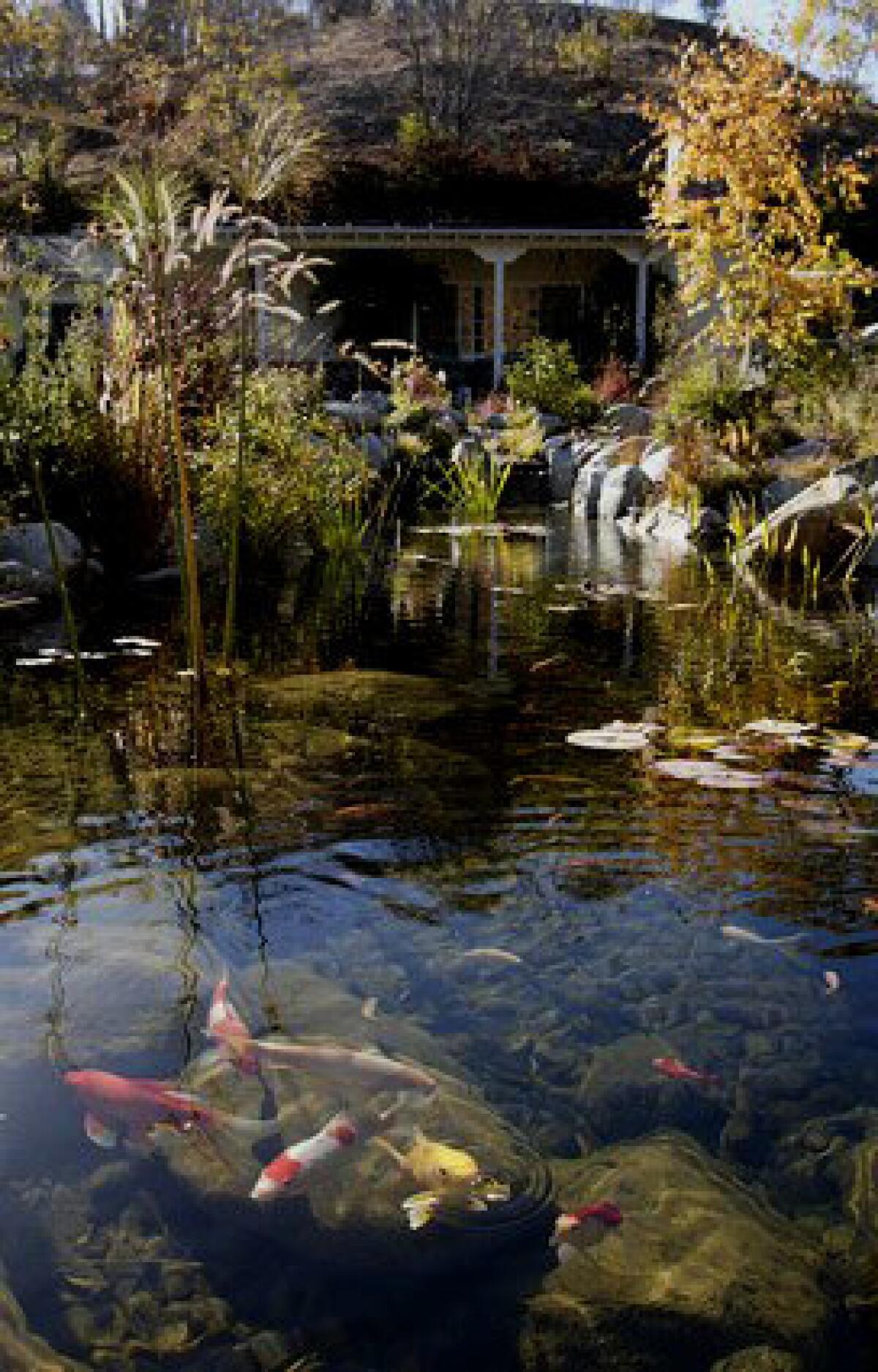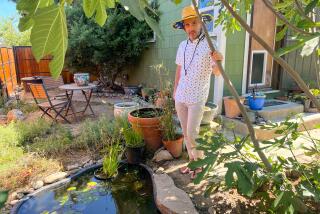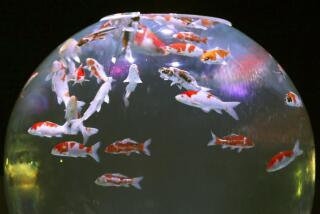Now, before you run to the store and buy some koi …

Keeping koi
Think of a koi pond as an outdoor aquarium rather than a garden pool. To ensure good health, every koi home needs:
Sufficient depth: Local owners advise a minimum of 3 feet.
Sufficient size: One formula says each 10-inch fish requires 20 square feet of pond surface area. Because koi can reach 10 inches in two years, plan ahead.
Drainage: A proper system will rid pond of waste water.
Filtration: Koi grow rapidly and produce a lot of waste, which must be removed. A filtration system is essential.
Aeration: The pond needs a means of introducing oxygen to aid koi metabolism. Waterfalls do this, as do air pumps.
Conditioning: A water conditioner can correct for chemicals that are toxic to koi, such as chlorine.
Maintenance: This includes skimming debris, monitoring water quality and cleaning the filter system.
Costs
Do-it-yourself pond: Mystic Koi & Water Gardens in Upland (www.mystickoi.com) says a do-it-yourselfer hoping to build a pool to accommodate three or four fish can expect to spend at least $1,500 to $2,000 on supplies and equipment. Landscaping and koi are extra.
Professional pond: Professionally designed and installed water features for koi generally range from about $7,000 to $10,000 for a small pool with waterfall to $500,000 for an artificial, stream-fed, 20,000-square-foot mini lake. The region’s installers include California Waterscapes in La Crescenta (www.californiawaterscapes.com) and Exotic Aquatics in Redlands (www.exoticwaterscapes.com).
Fish: Koi don’t have to be expensive. A pretty, domestically raised 3- to 5-inch koi that has gone through quarantine and passed a pathogen test is $10 at Exotic Aquatics. Colorful year-old fish (tosai) that are 4 to 6 inches long, imported from certified Japanese breeders and quarantined after their arrival sell for $20 to $50 at Mystic Koi.
Some hobbyists purchase fish at the annual fall auction conducted by the Zen Nippon Airinkai Koi Club’s Southern California chapter and the Earl Burns Miller Japanese Garden at Cal State Long Beach.
Helpful hints:
Do set up your pond and condition the water before you buy a single fish.
Don’t confuse koi ponds with water gardens. Use plants with care. Koi will eat unprotected roots, muddying the pool while laying waste to the waterlilies.
Do protect koi from local wildlife. Pools with straight sides make it harder for raccoons and herons to wade in and chow down. Where predators are numerous, some owners employ an electric fence, but oftentimes water depth and proper pond design are enough to keep fish safe.
Resources
Eastern Nishikigoi: Koi importer’s website is www.enkoi.com.
Nishiki Koi Club: www.nishikikoiclub.com.
Associated Koi Clubs of America: www.akca.org. Has links to local clubs.
— Ariel Swartley
More to Read
Sign up for The Wild
We’ll help you find the best places to hike, bike and run, as well as the perfect silent spots for meditation and yoga.
You may occasionally receive promotional content from the Los Angeles Times.









